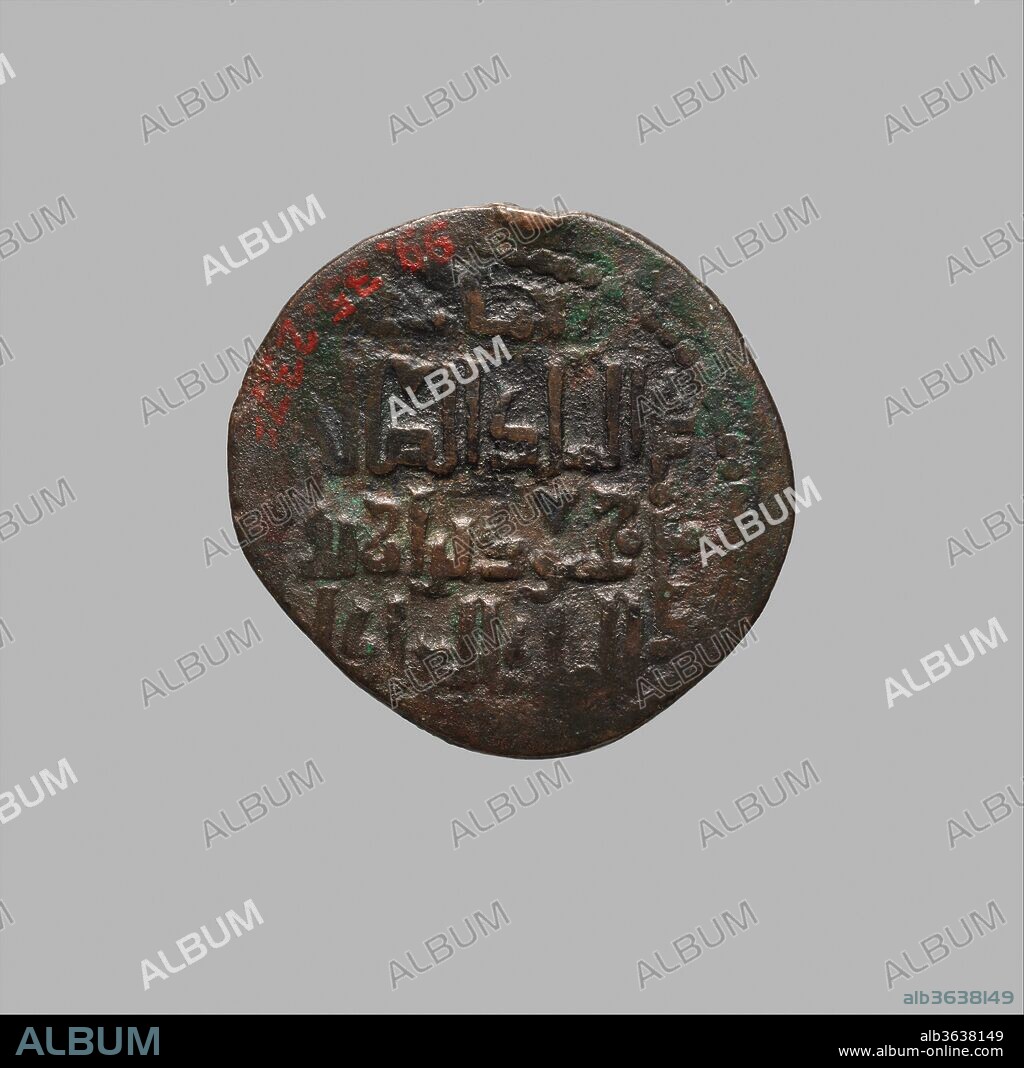alb3638149
Dirham of Nasir al-Din Mahmud (r. 1201-22): Double-Headed Bird of Prey

|
Ajouter à une autre Lightbox |
|
Ajouter à une autre Lightbox |



Avez-vous déjà un compte? S'identifier
Vous n'avez pas de compte ? S'inscrire
Acheter cette image.
Sélectionnez l'usage:

Titre:
Dirham of Nasir al-Din Mahmud (r. 1201-22): Double-Headed Bird of Prey
Légende:
Voir la traduction automatique
Dirham of Nasir al-Din Mahmud (r. 1201-22): Double-Headed Bird of Prey. Dimensions: Diam. 1 1/8 in. (2.9 cm)
D. 1/16 in. (0.2 cm)
Wt. 0.4 oz. (11.3 g). Date: dated A.H. 615/ A.D. 1218-19.
The period from the mid-twelfth to the mid-thirteenth century witnessed a growing regional economy in the Jazira which led to a profusion of unusually large and heavy copper coins depicting a myriad of figural imagery. Their large size (approx. 2.4-3 cm), the existence of figural imagery, and certain themes recall Byzantine copper coins which were used as petty coinage and which this new coinage complemented. The iconography of many of these coins relates to ancient Roman (cat. 14e), Greek, and Byzantine (cat. 14f) coins. Certain rare examples even copy coins from different periods (cat. 14f), while others have unusual iconography (cat. 14i or cat. 14k), the visual sources and artistic models of which remain difficult to identify. The nearly exact rendering of certain images suggests that mint makers had their models at hand. Ancient gold and silver currency was probably uncovered when rebuilding or erecting monuments, as many of the towns and cities occupied by the Artuqids and Zangids were important centers in antiquity.
Technique/matériel:
COBRE
Musée:
Metropolitan Museum of Art, New York, USA
Crédit:
Album / Metropolitan Museum of Art, NY
Autorisations:
Modèle: Non - Propriété: Non
Questions sur les droits?
Questions sur les droits?
Taille de l'image:
4067 x 4031 px | 46.9 MB
Taille d'impression:
34.4 x 34.1 cm | 13.6 x 13.4 in (300 dpi)
 Pinterest
Pinterest Twitter
Twitter Facebook
Facebook Copier le lien
Copier le lien Email
Email
